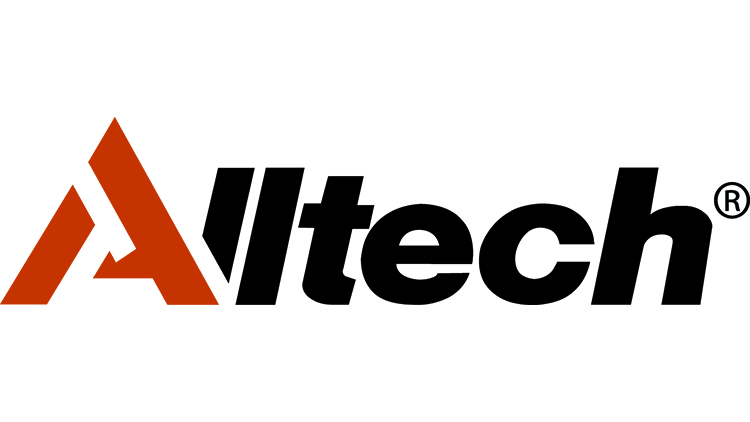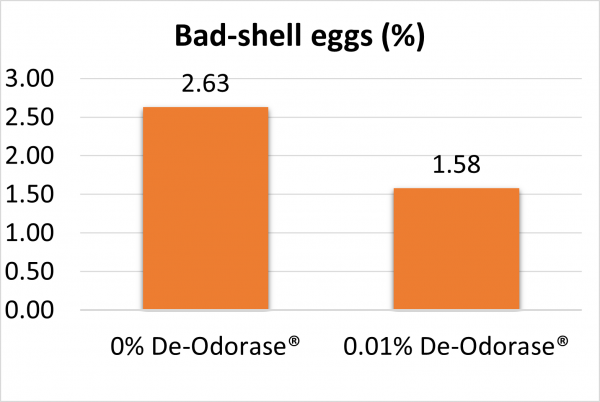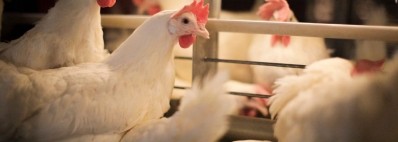Promotional Features
Controlling smells and ammonia emissions for animal health and performance
Marquisha Paul, Post-Doctoral Research Fellow, zcnhy@nyygrpu.pbz
How does ammonia form in poultry and swine production?
It is estimated that approximately 70–80% of the nitrogen fed to animals is excreted. In poultry species, the majority of nitrogen waste is excreted as uric acid into the litter, which can be rapidly converted to ammonia by bacteria. These ammonia-producing bacteria accomplish this via naturally produced urease enzymes, which are responsible for the chemical conversion of uric acid to ammonia in the presence of water and oxygen. The remaining nitrogen waste is excreted as ammonia and urea. In swine, urea in the urine is a major contributor to ammonia formation in swine houses. After urea has been excreted, it is hydrolyzed and then converted to ammonia with urease by the bacteria present in manure.
Due to the ionic state of ammonia — specifically, its lack of ionic charge — it is easily released into the atmosphere. Because ammonia is a water-soluble gas, it can be dissolved where moisture is present, including on the skin and in the eyes, in oral cavities and in the lining of the respiratory tract.
Risks of ammonia emissions for animal health and performance
Ammonia can be described as having a sharp, suffocating and unpleasant odor. Most people can detect ammonia at a level of around 5 parts per million (ppm). When ammonia gas is dissolved in the moisture of eyes, the respiratory tract or other moist tissue surfaces, it reacts with water molecules to form ammonium hydroxide. Ammonium hydroxide is classified as a caustic substance that essentially burns or destroys living tissue.
OSHA limits human exposure to ammonia to a maximum of 50 ppm over an 8-hour workday due to its detrimental effects on human health. Poultry and swine with acute or chronic exposure to ammonia may suffer decreased performance and production, respiratory tract irritation or damage, eye irritation or damage, and increased susceptibility to disease. Experts recommend that ammonia levels in poultry houses and swine production facilities should not exceed 25 ppm, while more conservative recommendations suggest a maximum limit of 10 ppm. In general, the ammonia concentrations in swine facilities are lower than those in poultry houses — although, in swine production, higher ammonia levels are associated more with finishers than sows, weanlings or growers.
In enclosed animal production, dust and particulate matter circulate in the air and are known to carry microbes to the respiratory tract. A damaged respiratory tract due to high or prolonged exposure to ammonia can result in a reduced capacity of the respiratory barrier cells and immune cells to defend against and sequester the pathogens breathed in with dust particles. If the respiratory tract is unable to adequately clear bacteria from the lungs, this can lead to respiratory infection and illness. Persistent levels of ammonia at or above 25 ppm can have a negative effect on poultry and swine health. Research in poultry has shown a reduction in antibody titers in association with Newcastle disease virus, a contagious disease that affects the respiratory system and respiratory tract. Chronic exposure to ammonia at this level can also cause ocular irritation. In poultry and swine, when ammonia levels exceed 50 ppm, reduced body weight, poorer appetite and feed conversion, and higher mortality are observed, in addition to respiratory and ocular damage.
Controlling ammonia levels and odor
Conditions that can exacerbate ammonia levels in poultry and swine production include diets with excess nitrogen, a high relative humidity, high temperatures, wet animal waste and litter, a slightly basic pH in the waste and litter, and poor ventilation. The reuse of litter between flocks can contribute to increased ammonia levels in poultry production, while the delayed removal of manure and slurry buildup in swine houses can increase ammonia levels.
Some strategies to control ammonia include limiting excess nitrogen and using feed additives in poultry and swine diets, providing adequate ventilation and properly managing the manure, slurry and litter.
Keeping the manure and litter dry helps to reduce microbial access to water molecules, which are needed to convert the excreted uric acid or urea into ammonia. Ventilation and adsorbents help keep wastes dry by lowering the moisture content. Proper ventilation helps reduce condensation and aids in the evaporation of moisture. Many adsorbents sequester ammonia and water from the environment, thereby reducing ammonia gas emission and bacterial access to water molecules.
Other strategies for managing ammonia include applying acid treatments and microbial/enzymatic inhibitors directly to animal waste. In the presence of acid, ammonia can be converted to ammonium, which is less volatile than ammonia. Acid treatments can also inhibit the growth and enzyme activity of bacteria. Acid lowers the pH of animal waste or litter, making the conditions less favorable for ammonia-producing bacteria. Similarly, microbial and enzyme inhibitors make the environment less favorable for ammonia production by limiting bacteria growth and enzyme activity. However, as animal waste builds up throughout production cycles and storage, the effectiveness of these treatment strategies may decline over time.
Extracts from the desert plant Yucca schidigera (yucca) are useful in controlling ammonia and odors in animal production. Yucca is generally recognized as safe (GRAS) by the U.S. Food and Drug Administration and can be added to poultry and swine diets. It is known to contain active components that alter nitrogen metabolism, as evidenced by reduced blood urea concentrations and ammonium ions. Active components in the yucca plant can also bind ammonia and exhibit urease-inhibiting activity, which help reduce the release of ammonia from animal waste and litter and limit the conversion of uric acid or urea to ammonia. De-Odorase is derived from Yucca schidigera and can be used to control ammonia and odor in poultry and swine production. In a study with finishing pigs, ammonia concentrations were reduced by 30% when pigs were fed De-Odorase (Figure 1)1.
Composting is a good way to recycle organic matter so that it can be reused as fertilizer. However, the process of composting takes some time, and ammonia production can quickly increase. Research in layers has shown that, when they are fed De-Odorase, the ammonia emissions from compost piles are drastically reduced and controlled over time (Figure 2)2.
Figure 1. De-Odorase reduces ammonia emissions in finishing pig production.
Figure 2. De-Odorase controls ammonia emissions in composted layer manure over time.
Research on saponins, bio-active compounds found in yucca plants, indicates that they may enhance the uptake of certain nutrients in the intestinal membrane through several different mechanisms. Saponins have surfactant activity that reduces the surface tension of fluids similar to bile salts. This soap-like property contributes to fat emulsification and digestion. In the intestines, saponins increase the membrane permeability of mucosal cells via membrane depolarization, which may allow for an increased absorption of nutrients. Vaccines help protect animals from disease, but sometimes, they have undesirable side effects, such as reduced growth performance. A broiler study demonstrated that broilers fed De-Odorase and given a vaccine for coccidiosis had improved body weight gains and feed conversion compared to vaccinated broilers not fed De-Odorase 3.
The absorption of nutrients — particularly calcium — is important for shell formation in egg-laying hens. In older layers, shell strength may decline with age due to the decreased absorption and mobilization of calcium. In the study mentioned above, layers that were fed De-Odorase from 60–80 weeks of lay exhibited a 40% decrease in bad-shell eggs (i.e., shell-less, soft-shelled, cracked, wrinkled, etc.) at 80 weeks of production (Figure 3)4.
Figure 3. De-Odorase decreases bad-shell eggs in older hens.
De-Odorase is versatile in that it can be added to poultry and swine diets or applied directly to manure and litter.
References:
1. Vucemilo et al., 2004. International Society for Animal Hygiene, Saint-Malo, France
2. Newman & Sefton, 1998. National Poultry Waste Management Symposium, Springdale, Arkansas
3. Alfaro et al., 2007. Journal of Applied Poultry Research
4. Ao et al., 2017. International Poultry Scientific Forum, Atlanta, Georgia







